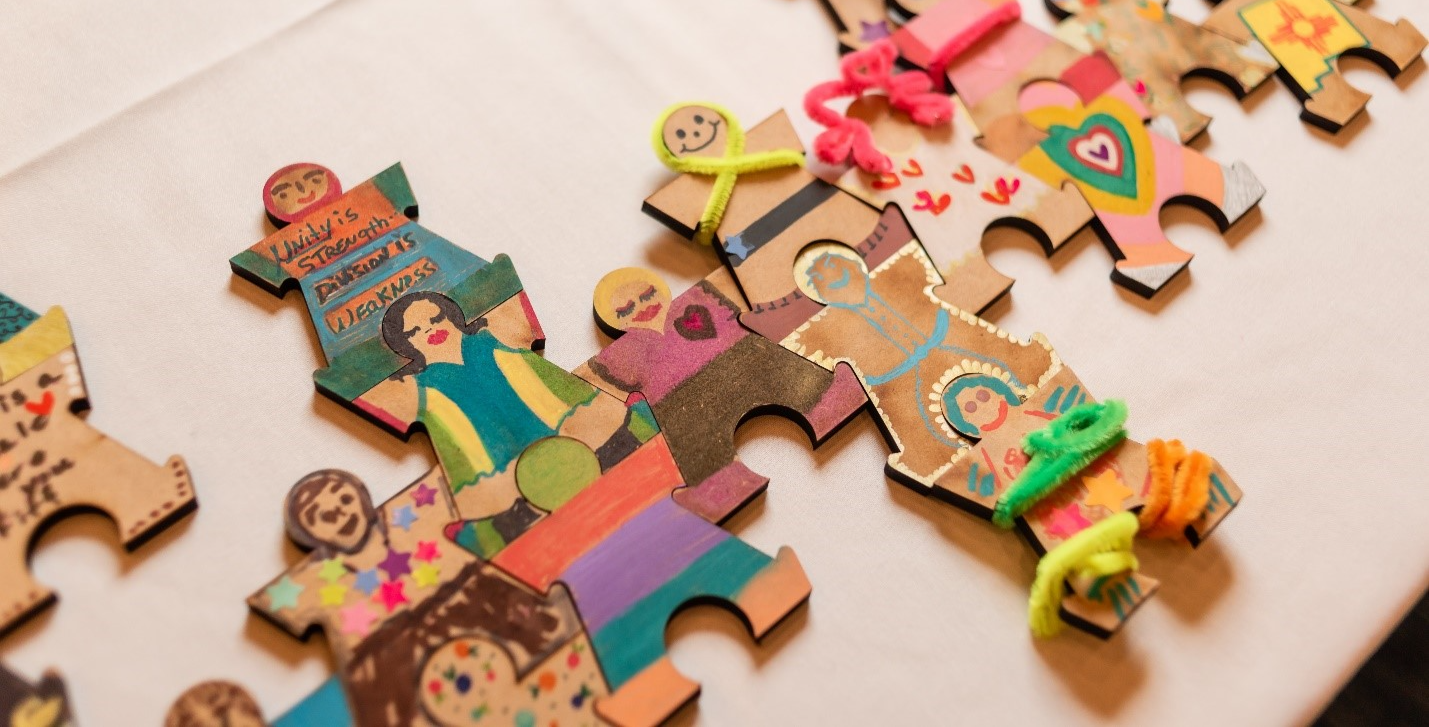 Collective impact is all the rage these days. The concepts put forward in the paper that appeared in the Stanford Social Innovation Review in the Winter 2011 by FSG Social Impact Consultants have resonated with collaborative tables across Canada, the United States and internationally. The five conditions of collective impact include a common agenda, shared measurement, mutually reinforcing activities, continuous communication and a backbone infrastructure. Simple in design, much more challenging in the practice.
Collective impact is all the rage these days. The concepts put forward in the paper that appeared in the Stanford Social Innovation Review in the Winter 2011 by FSG Social Impact Consultants have resonated with collaborative tables across Canada, the United States and internationally. The five conditions of collective impact include a common agenda, shared measurement, mutually reinforcing activities, continuous communication and a backbone infrastructure. Simple in design, much more challenging in the practice.
Recently, Tamarack developed a module for Innoweave which focused on the first condition of collective impact – that of building a common agenda. It might seem, on the surface, to be a simple concept – getting everyone around the collaborative table to focus on the same outcome or the same agenda. But, as we know, this is much more difficult in the execution. There are many factors that come to the forefront when considering a common agenda. Here are five things to consider when building a common agenda.
1. Who is driving the agenda? Collaborative tables often struggle with this. A precondition of collective impact is to attract influential champions to the collaborative table. Influential champions means that they have already or are currently playing a leadership role in the community. They have an agenda that they are passionate about. They are influential and important leaders. The challenge, within this group of individual and influential leaders, is to get agreement to work on something that is bigger than their own organizations or structures. To move from the transactional nature of their business to considering community transformation. This means that they have to agree to collectively drive a shared or common agenda. In some ways, they have to give up power and influence to get closer to community change. Easy to say, tough to do. There is much at stake. Will the collaboration be successful? Will it achieve impact? What risk is involved? A collective approach utilizing the skills and capacities of all members of the collaborative table is essential to this work. Another critical factor is that the people at the table have to acknowledge that there is a need to work in a different way because what they are doing now is not generating the systems level change. Jay Connor has written often about ‘working differently’ which is a key element when thinking about getting to a common agenda that is more than getting my agenda to win. This usually requires a new interpretation and branding of the common agenda that is not specific to any one of the champion agendas.
2. How complex is the issue? Simple problems can be solved with simple interventions. Increasingly our communities are facing complex problems including poverty, homelessness, neighbourhood revitalization, and environmental sustainability. A complex problem has multiple root and interrelated root causes. There are no simple solutions to these complex problems. A single intervention will not prevent climate change, it requires interventions at multiple levels from direct actions through to policy change. Collective impact is an approach that invites multiple partners from different sectors to engage with complex issues. In this way, it unleashes the knowledge and resources of different players in different ways. But complexity is also scary. Collaborative tables often freeze in the face of complexity being unable to move in one direction or another because there are too many options. Agreement on a common agenda and plan of action needs to include boundary setting. By setting boundaries and success measures, the collaborative table can begin to sort through which actions have more impact and which are not achieving effectively. Course correcting is a critical element of collective impact.
3. How does the issue play out in our community? Understanding the unique context of the community is an essential strategy in collective impact. This means that collaborative tables need to unpack the issue in a variety of ways. First, the collaborative table needs data. Who in the community is experiencing the problem and what groups are particularly vulnerable. Data can be used to inform strategy. Second, how does the community feel about the issue? Is there a sense of urgency and importance? Does the community believe that investing in a strategy would be successful? Understand what the supporters and antagonists are saying about the complex problem and the solutions being identified. Data is important, having opportunities for the community to make sense of the data will help strengthen buy in and commitment to the change effort.
4. Who is doing what already? Mapping the current community efforts to solve the problem is an essential strategy in collective impact. Knowing the players and their activities provides opportunities for leverage and quick wins. In collective impact, it is the power of the collective that is essential. Community engagement and buy in builds capacity. It is important to acknowledge that the members of the collaborative table, no matter how influential they are, will not be able to solve the complex problem on their own, but when you are able to scale up broad community buy in, these tables can leverage greater power. It is then that policies and systems begin to shift and where the impact begins to occur. Once you have a common agenda and a clear direction for moving forward, engage those elements of your community that will give you the most traction and leverage to move the needle on the community problem.
5. What is our next step? Now there’s the challenge. Each collective impact initiative is in a different place and with a different community context. Your next step is to get into conversation. Explore the problem. Bring lots of folks to different tables and think together. Look at the data – hard and soft – and look at what it reveals. Building a common agenda that is transformational means that you have to give up your answer and ask lots of hard questions. It also means that you have to listen more than speak. Hard concepts for solution seekers.
Getting to collective impact is challenging, vexing, frustrating and community changing. I would love to hear your thoughts about struggling through the first stage of collective impact and building a common agenda. What lessons have you learned? What advice do you have to share?
(PS – I would like to thank and acknowledge Jay Connor and Scott Buell for their helpful comments on this blog)





